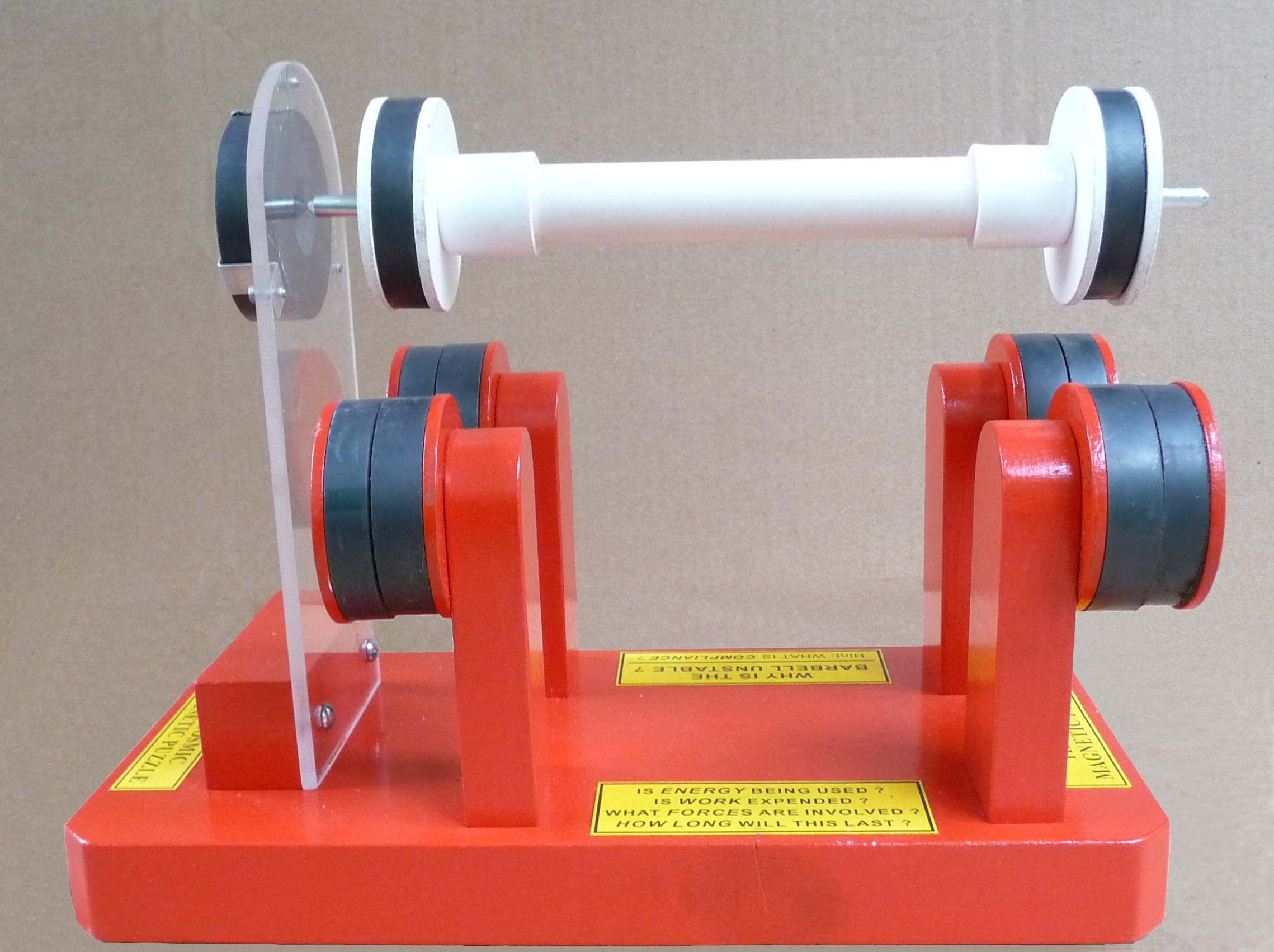 by: Martin Sagendorf
by: Martin Sagendorf
We often think we see forces. However, in reality, we only see the results of forces. To understand forces we must believe in Newton’s Third Law. It states that all forces can only exist in opposite pairs and be equal in magnitude. And… what is very interesting is that Newton’s Third Law does not stipulate that the forces be of the same kind.
Also, by Newton’s Second Law: If the (net) forces are equal, there will be no accelerations (Fnet = ma = 0)… in other words… equal and opposite (net) forces create a state of equilibrium. An interesting example of equal and opposite (and unlike-type) forces is that exhibited by a combination of opposed magnetic fields within a gravitational (force) field. These two different (types) of fields interact purely as ‘force fields’ – only their forces matter… not their types.
The Cosmic Magnetic Puzzle exemplifies a combination of such forces: a barbell containing two ‘donut’ magnets supported in mid-air above stationary pairs of magnets – with an additional pair of donut magnets maintaining the horizontal location of the barbell.




 Posted by Tami O'Connor
Posted by Tami O'Connor  by: Norman Barstow
by: Norman Barstow